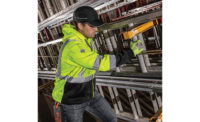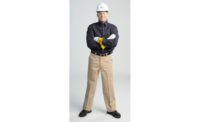At the start of September, the number of open jobs exceeded the number of active jobseekers for the 17th consecutive month—a record for the United States economy. In July, the U.S. Department of Labor released a report that put numbers to the phenomenon: there were 7.2 million job openings, but only 6 million people looking for work.1
This labor shortage is particularly prevalent for blue-collar and skilled labor positions. Employers are turning to unskilled workers, independent contractors and temporary workers for a short-term solution across industries.
Rising risks
Employers may not realize how lack of experience and safety training can open these workers—and the jobsite as a whole—to a significantly increased risk of injury. The reasons behind this increased risk are numerous:
- Lack of safety training or supervision
- Moving from job to job with short-term assignments
- Entering new work environments without on-the-job experience or knowledge
- Working without proper personal protective equipment (PPE) such as hard hats, eye protection, safety-toed boots, and hand protection
- Not knowing how to properly use and maintain their PPE
- Entering restricted spaces without knowledge of safety protocol and regulations
- Operating machinery without knowledge of lockout/tag-out procedures and regulations
- Hoping to use their temporary position as a springboard to full-time employment and taking risks to increase productivity and impress their supervisors
- Not speaking up about safety problems or poor working conditions to avoid being blacklisted by temp agencies or handed the dreaded Do Not Return (DNR) stamp on the back of a work slip
Rising injuries
Due to these risks and a lack of skills typically required for these roles, inexperienced workers can face a daunting variety of workplace safety risks, including fractures, punctures, lacerations, dislocations, heat exhaustion and chemical exposure. A study of blue-collar temp workers in five U.S. states revealed that they have a much higher risk of on-the-job injury: a 72 percent increase in Minnesota; 66 percent in Oregon and Massachusetts, and 50 percent in California and Florida. And as a result, their injuries tend to be more serious, meaning they miss more work – 40 days compared to 27 days for permanent workers.2
In the temporary worker safety section on its website, OSHA points to what it considers the most serious threat to safety: a breakdown of communication, which can cause a fractured sense of shared responsibility between the staffing agency and the host employer. Staffing agencies and employers are equally responsible for maintaining a safe work environment and ensuring that OSHA training, hazard communication and recordkeeping requirements are taking place.
Strategies to curb jobsite injuries
Transparency and clear communication between all parties involved, including the employer, staffing agency and worker, are essential to create a safe work environment. Two essential best practices – proper training and PPE solutions – ensure workers stay safe on the job and injury-free.
For training, temporary workers should receive two levels of safety training: basic fundamentals and site- and task-specific orientations. The basics can often be covered by the staffing agency and include an employee’s right to know about workplace hazards (OSHA’s HazCom communication standard) and their right to speak up about dangerous conditions without retaliation.
Employers should also train workers about safety specifics, such as the company’s confined-space entry procedures, energized machine lockout/tag-out requirements, respiratory protection and hearing conservation requirements, and PPE requirements. Both the staffing agency and the employer should conduct safety and health orientations for temp workers before they begin.
Even with proper safety training, employees who wear specialized PPE for long, grueling hours might avoid properly wearing items they consider uncomfortable, which can lead to a higher risk of injury on the job. To avoid this scenario, certain manufacturers are creating PPE solutions that meet the demand for more lightweight and comfortable safety equipment. Through studying on-site work practices and soliciting feedback from workers across a variety of industries, these manufacturers are staying ahead of the activewear trend’s influence on PPE and making material advances that are not only more lightweight and comfortable, but also consistently match the safety standards achieved by their bulkier predecessors.
Remember, PPE is only successful if it properly fits both the employee and work environment. Employers should look for PPE manufacturers who design their products with specific work environments and conditions in mind to ensure their employees are properly outfitted, helping to avoid injuries.
Benefits of implementing jobsite safety
A work environment with a superior safety performance record can be a competitive advantage for staffing agencies, helping them win contracts and save money in reduced workers’ compensation claims. For the employer, lower rates of incidents are evidence of a strong safety culture with strong safety values.
Employers should be able to assess the safety performance of temporary workers separate from its permanent workforce and at the same time have a holistic view of how temp worker safety integrates with the company’s overall safety performance. It’s important for employers to address the specific safety challenges presented by temporary workers on assignment, and simultaneously manage temp worker safety to the same level of protection afforded permanent employees.
Keeping workers safe is everyone’s responsibility. There should be trust and transparency between the staffing agency, employer and worker. Temporary workers should be encouraged to report safety risks and they should be taught that adherence to safety protocols will give them a competitive edge. Proper safety training, PPE solutions designed for the work environment, and clear communication about expectations and responsibilities will help agencies, employers and all employees create a safer working environment.
- Bureau of Labor Statistics, Job Openings and Labor Turnover Summary, https://www.bls.gov/news.release
- ProPublica, How To Improve Temp Worker Safety, https://www.propublica.org/article/how-to-improve-temp-worker-safety


